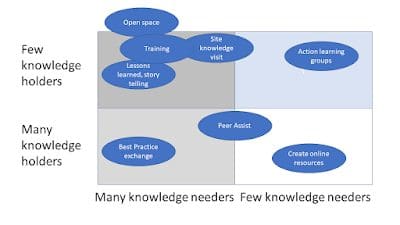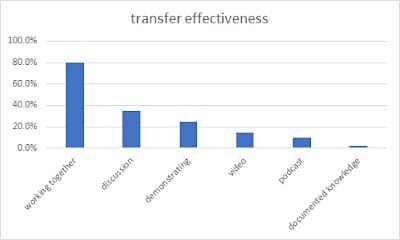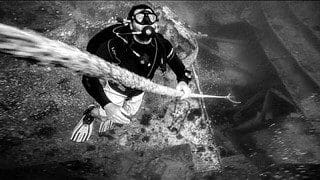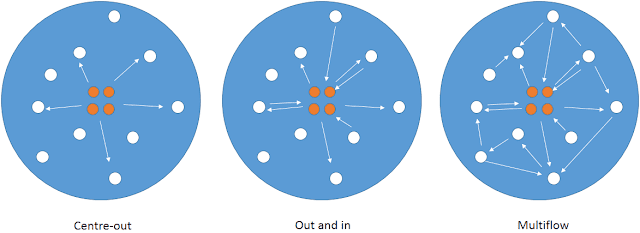Favorite Know-Why is important in KM, but sometimes neglected. Let’s see what happens if this is not captured. Image courtesy of keesler.af.mil Know-how is one of the cornerstones of Knowledge Management. If we capture how things should be done, we empower people who need to perform a task, but have
Read More
 Shared by Nick Milton March 16, 2020
Shared by Nick Milton March 16, 2020
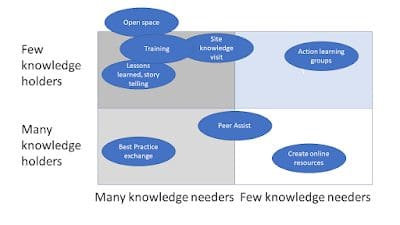
Favorite You want to plan a face to face event for your Community of Practice in order to transfer knowledge, but which event style do you select? This is a discussion I have been having recently, and it struck me that this might be a useful blog post. Now there
Read More
 Shared by Nick Milton March 2, 2020
Shared by Nick Milton March 2, 2020

Favorite You want to plan a face to face event for your Community of Practice in order to transfer knowledge, but which event style do you select? This is a discussion I have been having recently, and it struck me that this might be a useful blog post. Now there
Read More
 Shared by Nick Milton March 2, 2020
Shared by Nick Milton March 2, 2020

Favorite Transferring knowledge is like passing a ball – both the thrower and the catcher share accountability for an effective pass. Imagine an experienced practitioner transferring knowledge to a younger colleague or group of colleagues. Who is accountable for ensuring effective knowledge transfer? The answer is that the accountability is
Read More
 Shared by Nick Milton February 28, 2020
Shared by Nick Milton February 28, 2020

Favorite I have blogged quite a bit recently on Connect and Collect approaches to KM, aka the transfer of tacit and explicit knowledge. Here is a reprise and extension of a useful table which describes the two. Three of my recent blog posts have touched on Charts and pilots, Why
Read More
 Shared by Nick Milton November 20, 2019
Shared by Nick Milton November 20, 2019

Favorite Connecting people is far less efficient than Collecting while being far more effective – but how much more effective? Knowledge can be transferred in two ways – by Connecting people so that they can discuss, and Collecting knowledge in written (explicit) form so others can find and read it
Read More
 Shared by Nick Milton November 18, 2019
Shared by Nick Milton November 18, 2019

Favorite The heart of KM keeps knowledge flowing, and that heart has two chambers. Image from wikipedia You can think of the organisation as a body, and knowledge flowing round the organisation like blood flows round a body. But what is at the heart of KM? Is it knowledge sharing?
Read More
 Shared by Nick Milton September 24, 2019
Shared by Nick Milton September 24, 2019

Favorite There is no one-size-fits-all solution for knowledge transfer, because not every transfer context is the same. However we can look at four main classes or types of knowledge transfer, by looking at the dimensions of TIME and LOCATION. There are other dimensions as well, such as whether the transfer
Read More
 Shared by Nick Milton September 5, 2019
Shared by Nick Milton September 5, 2019

Favorite “The thread through the labyrinth” is a metaphor for allowing others to follow our steps safely. This is what Knowledge can do. German cave diver holding line, by Hossam El-Hamalawi on Flickr When Theseus negotiated Daedelus’ labyrinth in order to kill the Minotaur, he left a thread behind him
Read More
 Shared by Nick Milton July 5, 2019
Shared by Nick Milton July 5, 2019

Favorite There are three common styles of knowledge flow that you can see in organisations. We can call them centre-out, out and in, and multiflow. In our picture here, the red dots are the central group of experts, the white dots are the knowledge users or knowledge workers, and the
Read More
 Shared by Nick Milton March 6, 2019
Shared by Nick Milton March 6, 2019
![]() Shared by Nick Milton March 16, 2020
Shared by Nick Milton March 16, 2020

